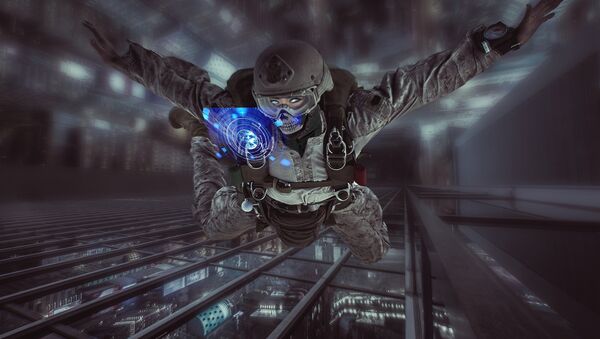The report, titled Cyborg Soldiers 205: Human/ Machine Fusion and the Implications for the Future of the DOD, says that “the primary objective of this effort was to determine the potential of machines that are physically integrated within the human body to augment and enhance the performance of human beings over the next 30 years.”
“Across popular social and open-source media, literature, and film, the use of machines to enhance the physical condition of the human species has received a distorted and dystopian narrative in the name of entertainment,” the study said. “Defense leadership should understand that negative public and social perceptions will need to be overcome if these technologies are to be fielded.”
The Pentagon researchers focused on four probable areas of enhancement: supervision, augmented hearing, enhanced muscles, and “direct neural enhancement of the human brain for two-way data transfer.”
According to the report, the enhanced eyes would allow soldiers to see across the battlefield in different wavelengths, and identify targets in “dense, urban environments or subterranean megacities that will challenge identification and tracking of targets.” The researchers mentioned that the eye operation is a great risk and like many of enhancements may only occur after a soldier is injured.
“Ocular enhancement would be an attractive medical option in situations where the eye tissue has been damaged or destroyed by injury or disease,” the researchers said. “It is deemed unlikely that individuals would willingly undergo the removal of healthy tissue in an area considered to be sensitive. However, the central and critical role that vision plays in society would likely motivate warfighters who have lost part or all of their vision to voluntarily undergo surgery that would restore or even improve their ability to see.”
Another enhancement mentioned in the report is an optogenetic musculoskeletal control system. “The most likely [use] would be in the restoration of lost function due to injury of muscles or nerves,” the study said. “Musculoskeletal injuries are the second leading cause of lost duty time in the US Armed Forces.
In order to enhance muscles the Pentagon would enhance weak tissue with a “network of emplaced subcutaneous sensors that deliver optogenetic stimulation through programmed light pulses,” the researchers said. Optogenetics stimulates muscle tissue, or even neurons, with light instead of electricity – allowing wounded soldiers to return to battle with cybernetic muscles that operate better than before or even allow them to control external tools such as drones and weapons systems not directly attached to their body.
The report also described cybernetic ears which both enhance perception and allow soldiers to access new abilities. The study imagines that future advances won’t just improve people’s hearing, but also allow for the “conversion and transmission of these signals to others across distances.” People could use cybernetic ears to access a network of voices and communication only perceptible to them. It’s like implanting your smartphone inside your ear, complete with real-time translation features for foreign languages.
The crown jewel of cybernetic enhancement is a direct interface between the human brain and machines. The Defense Advanced Research Projects Agency (DARPA) has been working on the technology for years. It has already successfully tested “prosthetic memory chips.” The study suggests a future where humans with neural implants are jacked into a matrix that allows them to control machines, have machines control them, and to control each other.
“The enhancement would not simply entail user control of equipment (brain to machine) but also transmission to the operator (machine to brain) and human to human (command and control dynamics) to enhance situational awareness as a drone, computational analytical, and human information is relayed to the operator,” the study reads.
Cybernetically enhanced soldiers could control drones and complicated weapon systems remotely with the power of their mind. The problem is, unlike some of the other technologies discussed, there probably won’t be a non-invasive way to achieve a symbiosis between soldier and machine.
The researchers suggested that neural links be restricted to an elite class of soldier, like the Navy SEALs, who may be amenable “if they could provide significant improvements in capability, lethality, survivability, and overall battlefield superiority,” they said.



